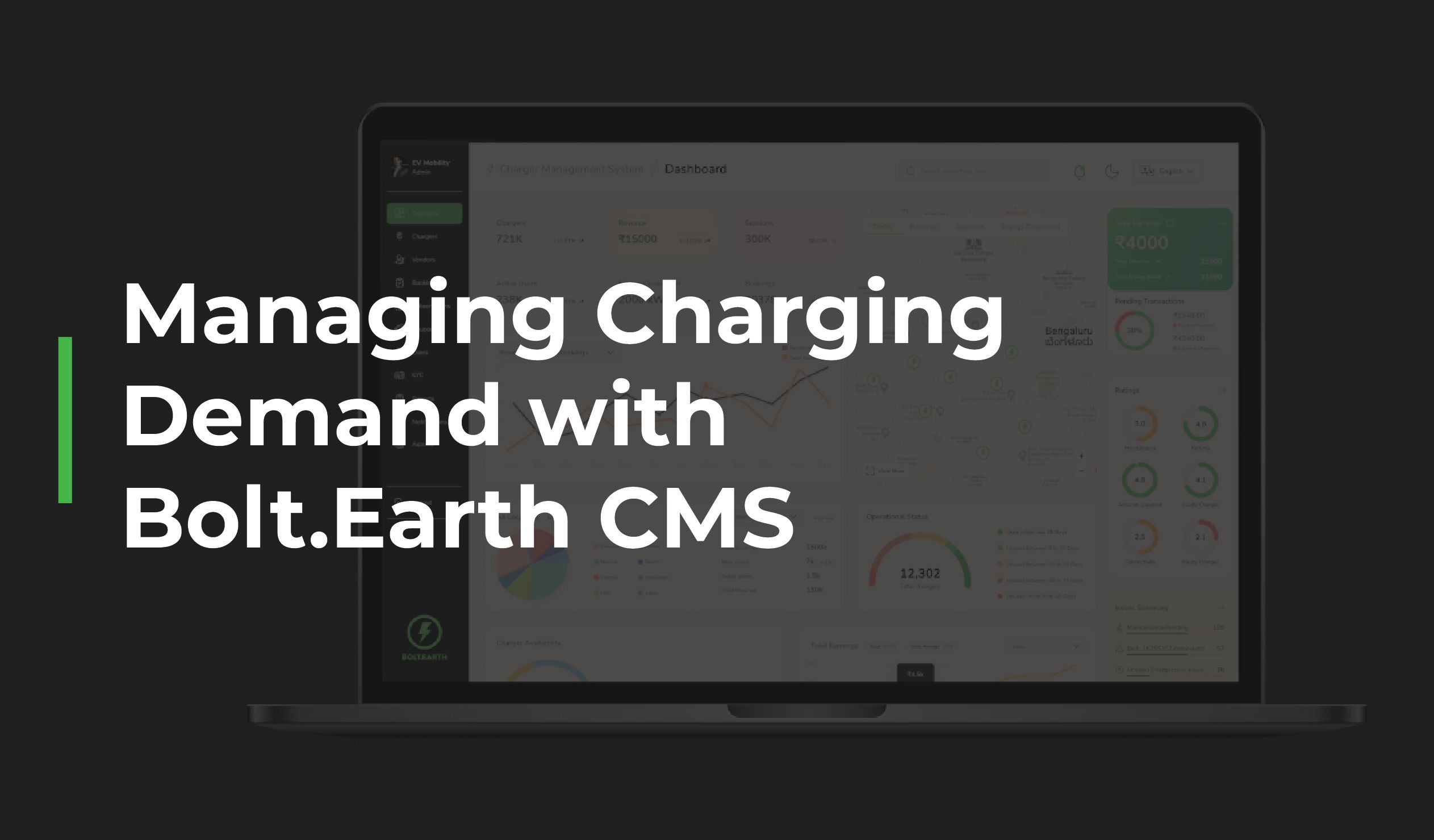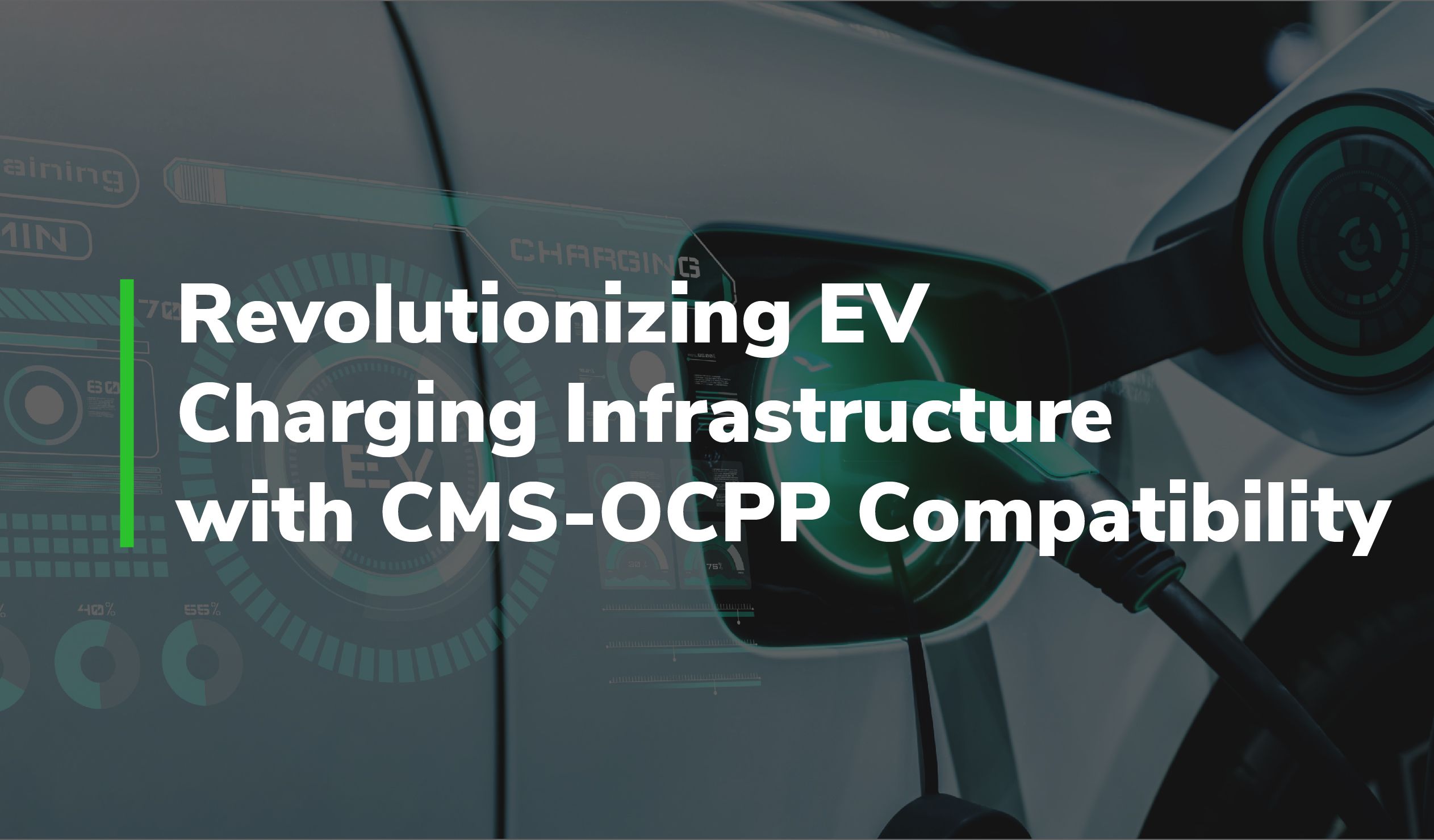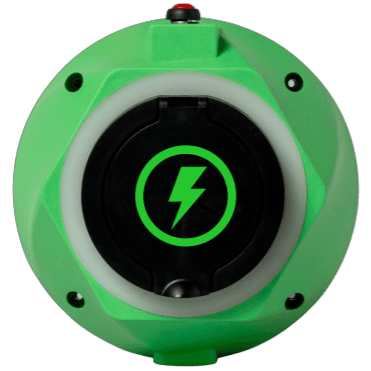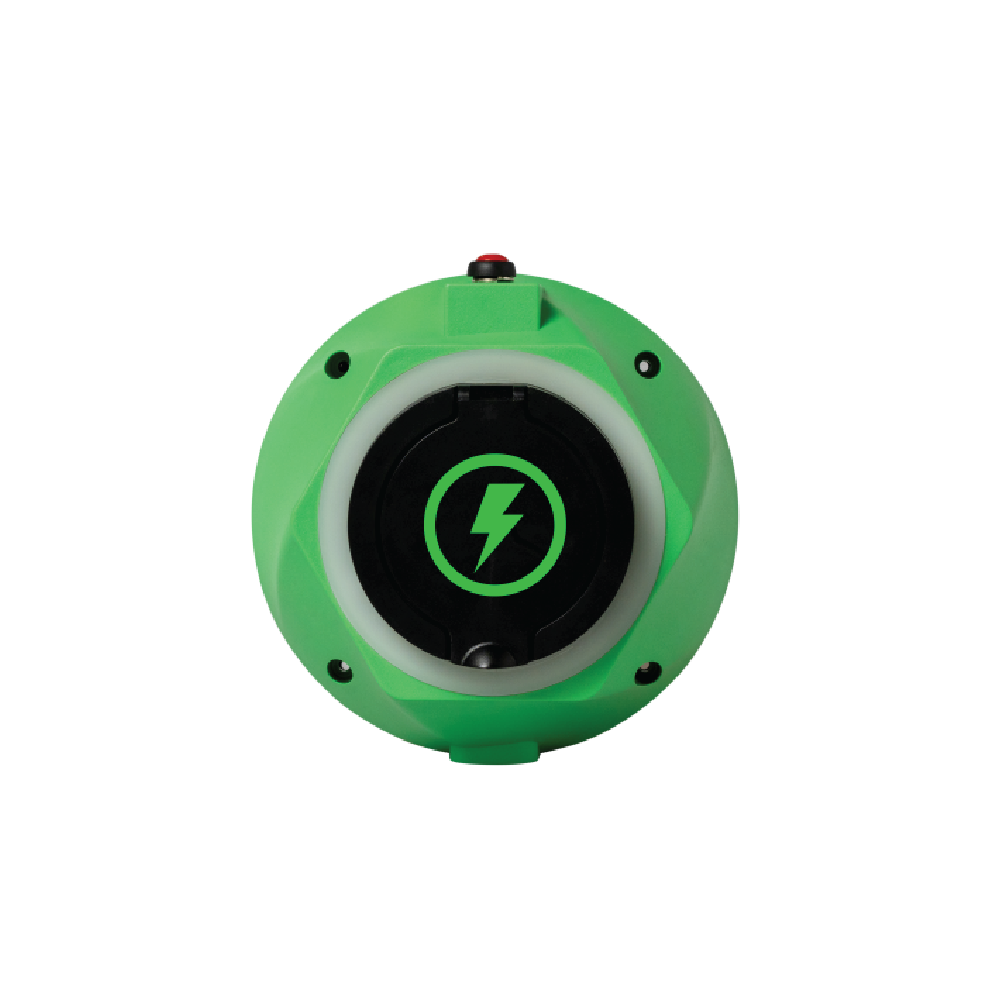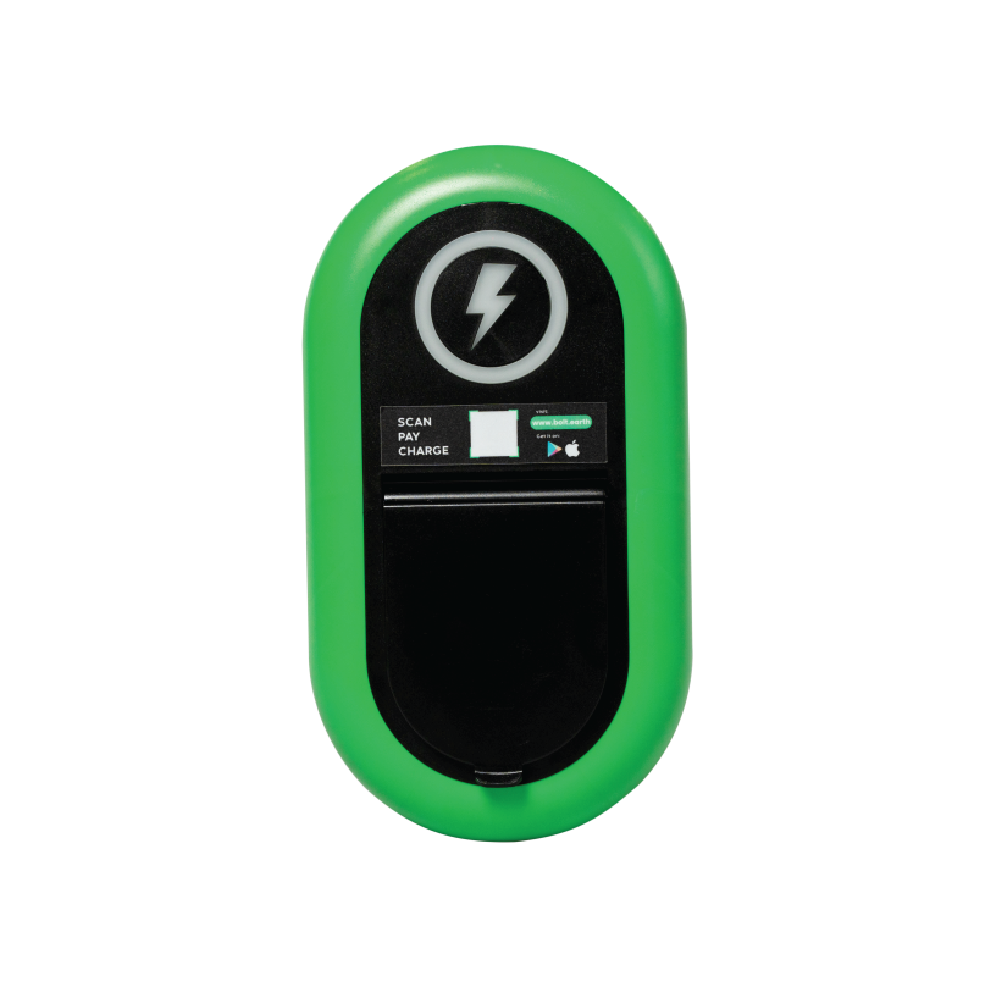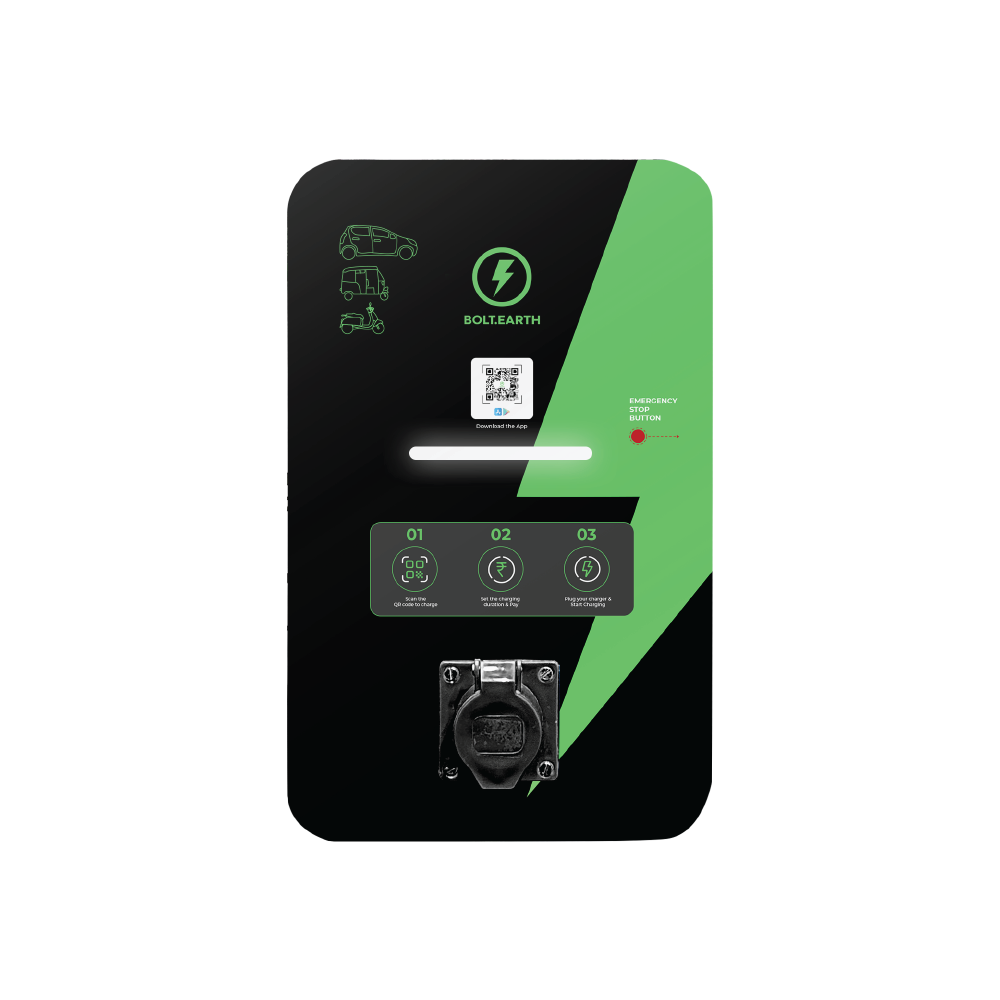How Electric Vehicles Can Help Decentralize the Energy Grid in India
Raghav Bharadwaj
Head of Strategy and Leadership
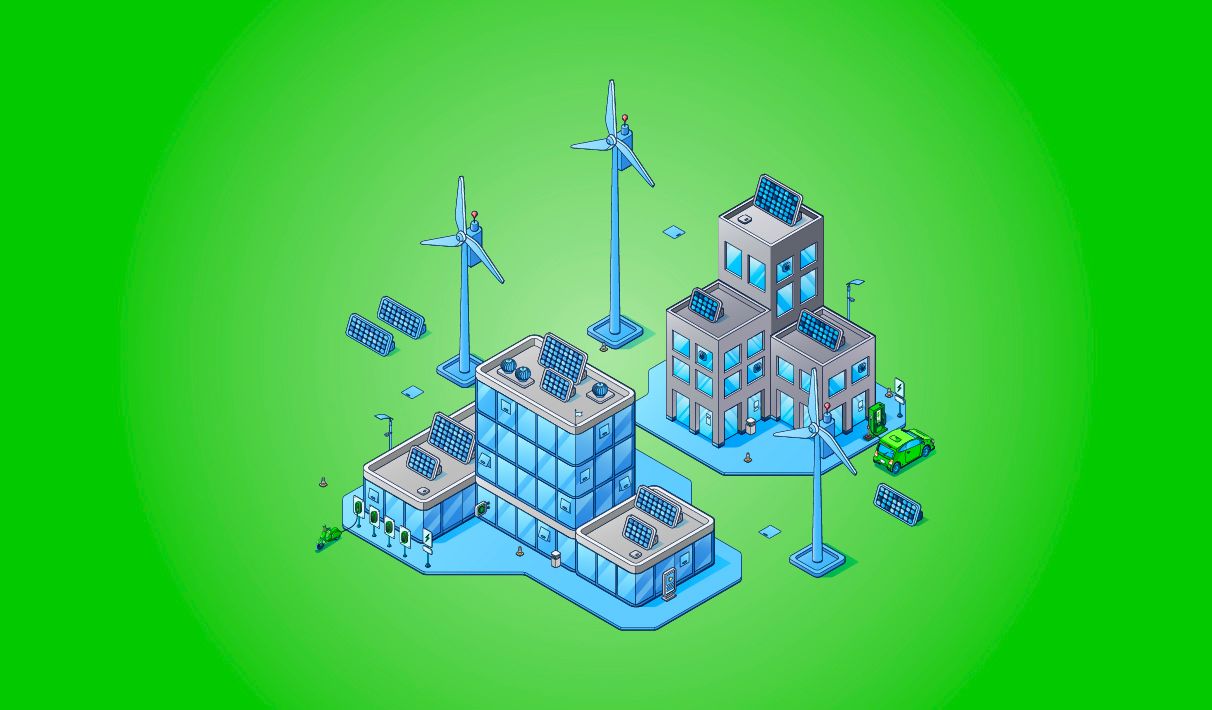
India's historic dependence on fossil fuels poses environmental and economic challenges. In today’s complex energy landscape, the urgent need for sustainable solutions opens the door to Decentralized Energy Resources (DERs) — small-scale, end-user proximate energy assets like photovoltaic systems, electric vehicles (EVs), and batteries.
According to JMK Research’s annual report, 455,733 new EV units hit India’s roads in FY2022. This growth in the EV ecosystem, when integrated with DERs, can optimize renewable energy management. EVs are essentially moving energy storage systems; they have the potential to redefine energy consumption, enhance power supply reliability, reduce transmission loss, and drive economic gains.
This article will examine the following questions:
- How can EVs help decentralize the energy grid?
- How are distributed energy resources (DERs) entering India’s EV ecosystem, and what obstacles are preventing their integration?
- Why is it important to implement solutions to overcome these challenges and maximize the cooperation between the EV ecosystem and decentralized energy in India?
The Rapid Growth of the EV Ecosystem and Distributed Energy Resources
India's EV market is projected to increase from $3.21 billion in 2022 to $113.99 billion by 2029, thanks in part to the popularity of 2- and 3-wheelers. For example, the prominent automotive manufacturing corporation Mahindra & Mahindra Limited has announced upcoming plans to release a range of electric vehicles. Government initiatives, such as FAME India subsidies, are facilitating this shift towards e-mobility; currently, 9 central ministries and departments and 27 states are participating.
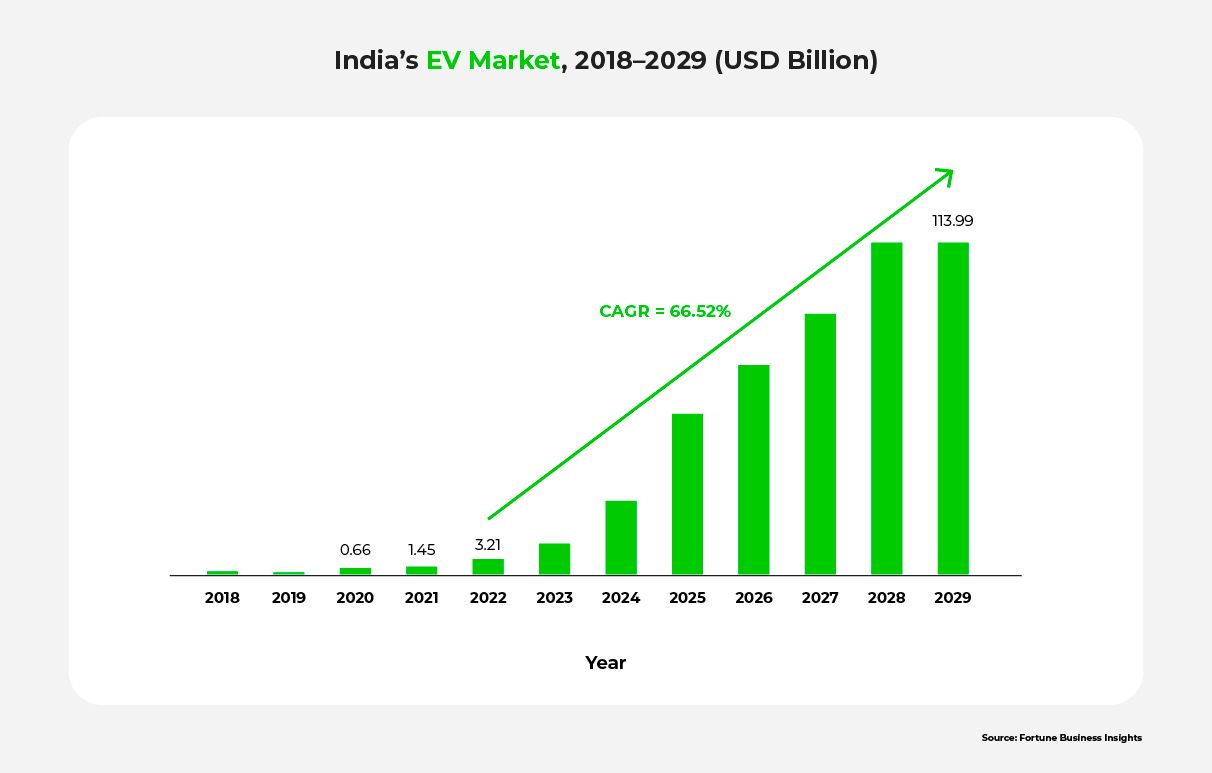
Nevertheless, India’s EV charging infrastructure lags. The government is targeting a total of 46,397 operational public charging stations by 2030, but there are only 5,254 so far. In order to meet India’s EV infrastructure goals, private sector investment — with a particular focus on manufacturing and installing EV supply equipment and battery swapping technologies — is crucial.
The EV ecosystem’s rapid development needs a significant shift in approaches to energy management. To successfully revolutionize its energy landscape, India will need to embrace decentralized energy resources (DERs).
DERs are small-scale energy resources positioned closer to consumption sites, thereby optimizing renewable energy use, reducing fossil fuel reliance, and increasing eco-efficiency. DER systems consist of distributed generation, energy storage techniques, and demand-response technologies.
- Distributed generation coordinates heat and power generation in combined heat and power plants, enabling optimal use of renewable energy.
- Energy storage techniques like batteries and compressed air stabilize the grid by storing excess energy and feeding it back during peak hours.
- Demand-response technologies optimize grid usage through real-time monitoring and communication.
Physical DERs produce, store, and consume power through various renewable energies (RE). This can take several forms. For example, solar power uses photovoltaic systems, wind power utilizes wind turbines, hybrid power taps into small hydropower generation, and bioenergy derives energy from organic matter.
The Australian Energy Market Commission’s classification system provides a valuable reference on capacity interaction and RE technologies.
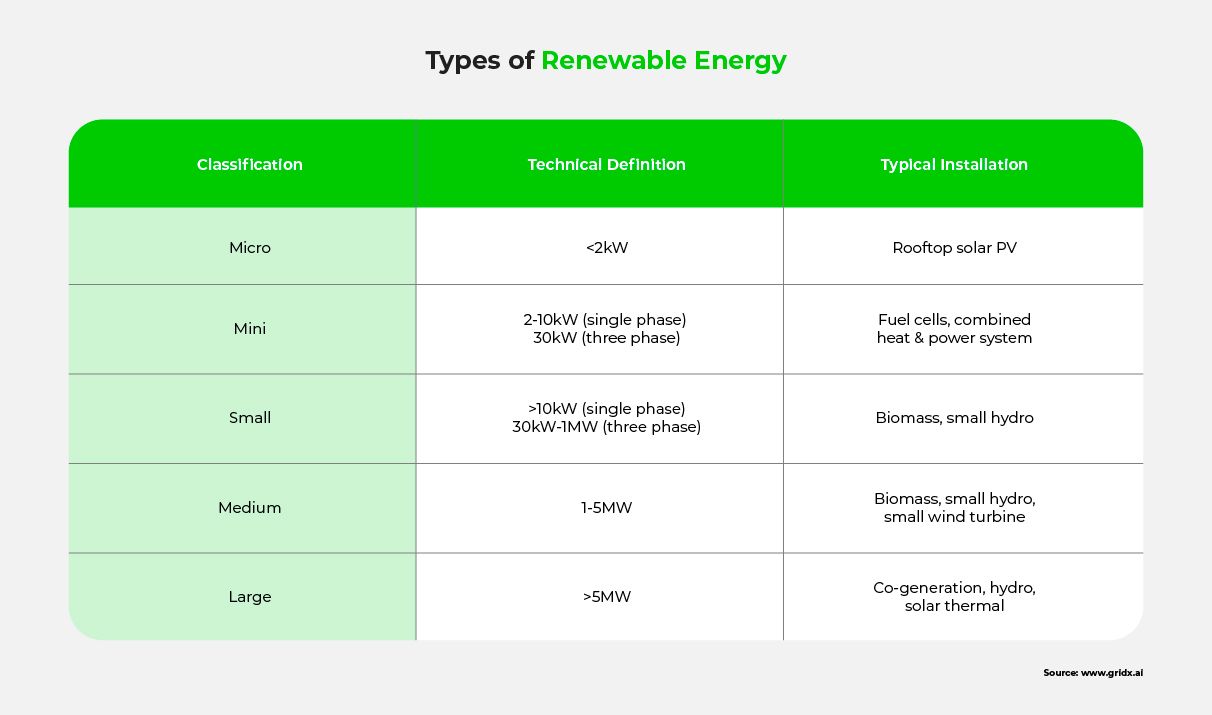
Individual DERs can be aggregated into virtual power plants (VPPs). Once regulatory and technical barriers are addressed, Vehicle-to-Grid (V2G) technology will be able to enrich this mix by leveraging the potential of EVs and their batteries.
Why Discuss DERs and India's EV Ecosystem Now?
The 21st century is witnessing a transformation in global energy dynamics, as advances in decentralized power technologies challenge traditional grids. According to the UN's SE4All initiative, by 2030, 70% of the currently unelectrified population will be able to access electricity through mini-grids or off-grid solutions.
India, in line with its commitment to sustainable development, is making significant progress towards its goal of having 50% of its energy requirements from renewable energy by 2030. In its 2022 end-of-year report, India’s Ministry of New and Renewable Energy announced that they had already installed 172.72 GW of non-fossil electricity capacity, accounting for 42.26% of the country’s total generation capacity.
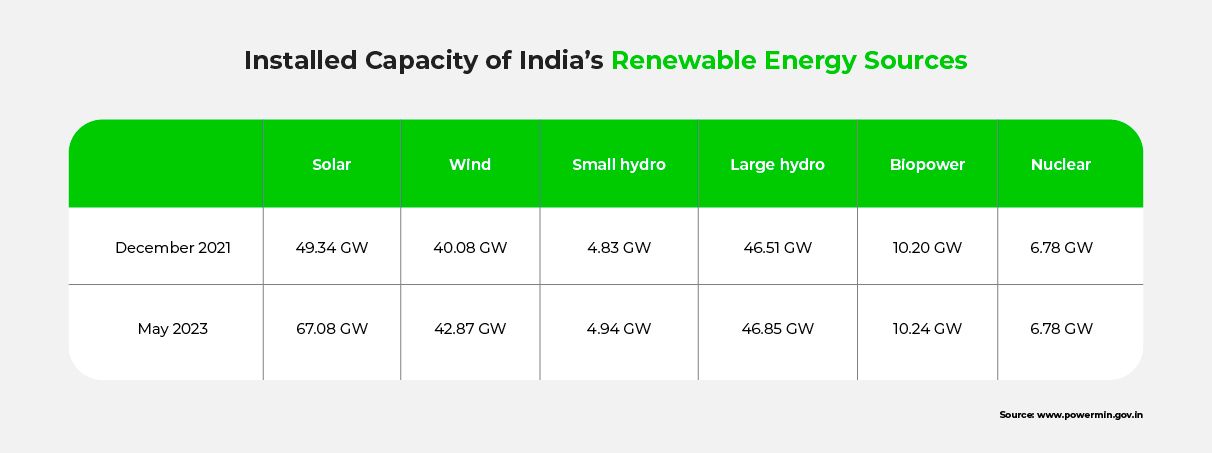
Distribution companies (DISCOMs) face challenges due to increasing renewable energy penetration, including balancing costs and the need for enhanced system flexibility. To address these challenges, India has undergone a paradigm shift, embracing innovative renewable energy procurement models, grid-scale battery storage solutions, and the integration of EVs across regions.
The projected annual sales of 23.6 million EV units by 2029-30 highlight the crucial role EVs can play in resolving grid integration challenges and optimizing the electricity system.
The DER sector is also a timely topic because it provides an opportunity for economic growth. Installing 280 GW of solar capacity and 140 GW of wind capacity could create approximately 3.4 million jobs in India. Various skill development programs offer training for these new careers in the growing solar, small hydro, and wind power sectors.
The Role of EVs in DER Integration
EVs can play a crucial role in integrating distributed energy resources through vehicle-to-grid (V2G) technology. V2G enables EV batteries to serve as energy storage devices — EVs can store surplus energy during low-demand periods, and then feed it back into the grid during high-demand periods. This contributes to grid stability and facilitates the integration of renewable energy sources.
EVs can also be strategically charged to align with renewable energy generation. Charging during the day, when solar energy is abundant, and utilizing workplace EV chargers during idle periods optimize energy usage. In the evenings, when demand peaks and solar energy is limited, EVs can be connected to V2G chargers near homes, supplying energy to meet peak demand.
By leveraging these capabilities, EVs can enhance grid flexibility, maximize renewable energy utilization, and support a sustainable energy transition.
Challenges in Integrating DERs and EVs into India's Energy Landscape
Successfully integrating DERs demands addressing technical, regulatory, and market challenges. It necessitates new standards, effective governance, and a regulatory ecosystem to optimize benefits, foster confidence, and enable updated utility business models.
Renewable Energy Source Integration Challenges
Several obstacles stand in the way of establishing an extensive and accessible EV charging network across India. These include:
- Insufficient EV charging infrastructure
- Limited accessibility in certain regions
- Remote locations of renewable energy installations (this strains weak transmission networks, resulting in faults and energy losses)
- Conventional grid that can’t accommodate the intermittent nature of renewable energy generation
- Sudden spikes and drops in energy supply
In theory, the EV ecosystem can address these challenges via technologies like V2G. However, these technologies are not yet sufficiently advanced to enable widespread implementation. For effective EV integration, comprehensive charging infrastructure is essential, encompassing electrical, control, communication, and standardized charging port components.
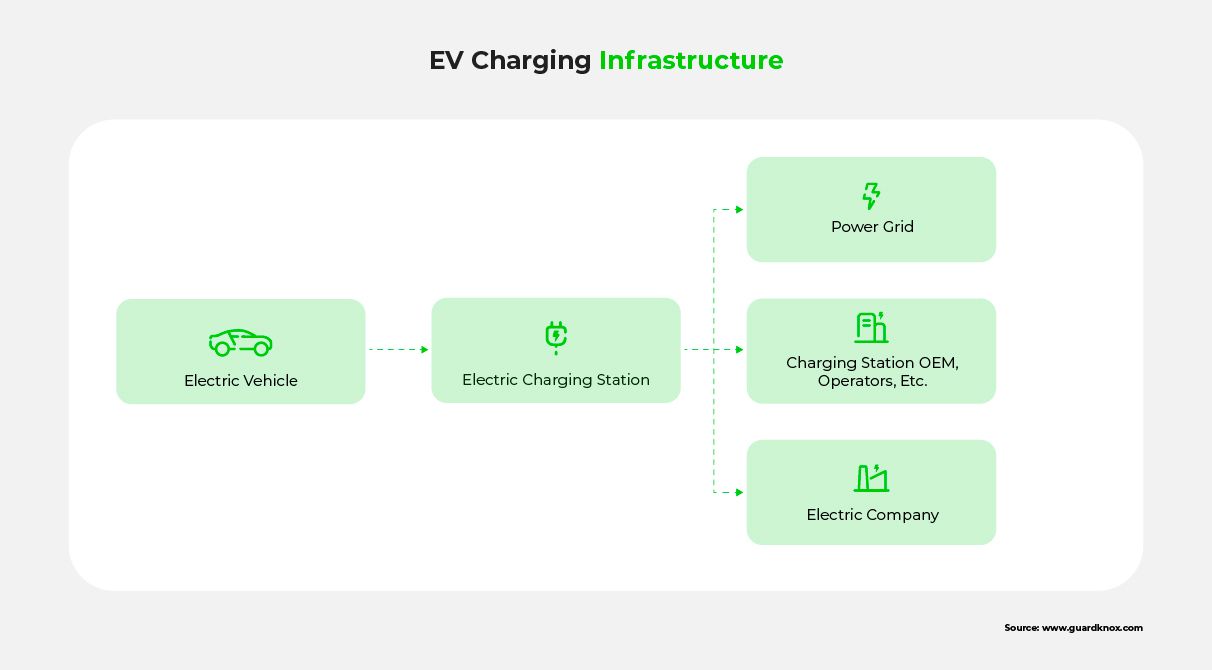
EV integration also comes with its own difficulties. For example, only smart batteries can help realize the V2G technology and, in turn, benefit the grid capacity. However, because smart batteries have special microchips programmed to communicate with a charger of the same brand, this introduces cross-brand compatibility complications, as well as increasing manufacturing costs.
Furthermore, V2G technology and smart grid integration involve the collection of personal data on location, preferences, and travel distances. Privacy concerns, including GDPR restrictions, pose additional challenges regarding the utilization and protection of personal data.
Overcoming all of these challenges requires strategic planning, adequate investment, and collaboration between government agencies, private companies, and utility providers.
It is vital to develop a comprehensive infrastructure plan, address the cost implications, ensure sufficient power supply, and enhance connectivity for charging stations.
Regulatory and Policy Hurdles
Because DER technologies are relatively new, the Indian government has not yet created clear regulations for integrating them into the energy grid. Policymakers must also establish technical standards. Conflicting needs of manufacturers, customers, distribution businesses, system operators, regulators, and aggregators can create grounds for contention. Harmonizing these standards is essential for ensuring smooth integration and operation of DERs.
Insufficient development of flexibility resources poses challenges, potentially leading to curtailment of renewable energy and increased costs in achieving decarbonization goals. Policymakers must tackle the question of how to unlock the inherent flexibility offered by DERs. Furthermore, the downstream segment of the power sector has gained paramount importance with the increasing decentralization of energy systems, but currently represents a weak link within India's electricity industry.
Policymakers also need to create technical standards. This can be challenging because different groups have different needs, such as manufacturers, customers, distribution companies, system operators, regulators, and aggregators. Harmonizing these standards is essential for ensuring smooth integration and operation of DERs.
Financial and Investment Barriers
Although electric vehicles can save money for individual consumers and strengthen India’s economy in the long run, EV adoption can pose a number of financial challenges. First, high upfront costs can be a major deterrent for potential buyers. While factors such as lower fuel, running, and maintenance costs, as well as tax incentives, can offset these expenses, the initial price remains a significant deciding factor for many potential customers.
Furthermore, fleet owners face potentially deal-breaking operating cost increases due to the price of electricity from the grid.
Finally, Indian banks and financial institutions commonly risk exhausting their capacity due to frequent exposure to lending for thermal assets. Therefore, another financial barrier in India is the lack of risk mitigation instruments for low-credit consumers.
Driving the Growth of DERs Through EV Integration and Supportive Measures
Recent technological advancements promise to facilitate EVs’ contribution to the Indian energy sector, especially in terms of integrating DERs. Successfully leveraging these new technologies will require substantial policy and regulatory support.
Integration of EVs and DERs
V2G technology is a groundbreaking innovation which enables bidirectional energy flow between EVs and the power grid; it allows EVs to not only charge from the grid, but also discharge energy back into it. This both provides a new means of energy storage, and empowers EVs to function as DERs.
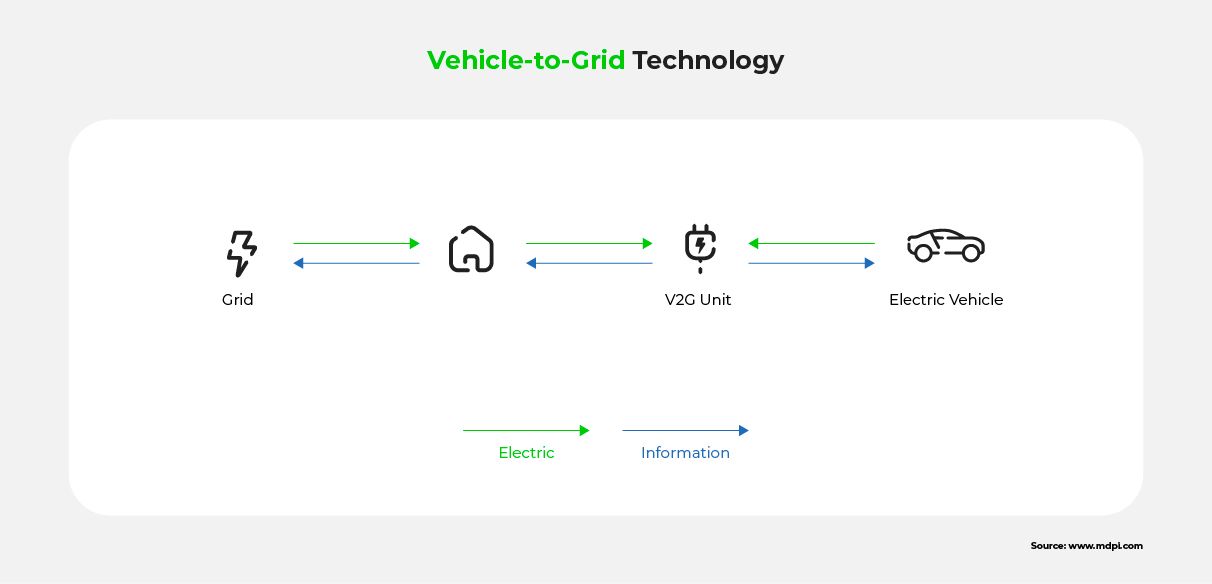
V2G technology can significantly benefit distribution companies. By utilizing V2G capabilities, distribution companies can actively engage in demand-side management, effectively flattening the load curve and optimizing grid operation. This demand-response functionality can contribute to more efficient grid management, and lead to significant cost savings in terms of flexibility and grid integration.
With V2G technology, EVs can function not only as vehicles, but also as valuable assets in the energy ecosystem. Leveraging their energy storage capacity and bidirectional energy flow, EVs can actively participate in balancing electricity supply and demand, offering enhanced grid flexibility and resilience.
Technology and Innovation
Widespread EV adoption is increasing the demand for microgrids in the energy sector. Leveraging smart technology and data from the Internet of Things (IoT) can address these challenges by enabling the establishment of microgrids. Microgrids, which are powered by intermittent energy sources, seamlessly integrate renewable energy (RE) and EVs. They facilitate smart charging, optimize energy consumption, and reduce costs, fostering a sustainable energy ecosystem. This empowers the sale of excess electricity generated from rooftop solar arrays and stored in EV batteries to local consumers, effectively meeting the demand for EV charging within the community.
In residential and commercial settings, EVs enhance energy efficiency by strategically charging during off-peak hours, thereby reducing peak demand and lowering electricity bills. Integration with wind turbines, energy storage systems, and combined heat and power generators further enhances energy management capabilities.
Energy hubs, designed to transfer and store various energy carriers, require meticulous management to successfully integrate EVs. Researchers focus on strategies to reduce costs and address tax implications, maximizing both economic and environmental benefits.
Virtual Power Plants, comprising decentralized generation, consumers, and energy storage, leverage the capabilities of EVs as large-scale energy assets. They enhance frequency response, power storage capacity, and contribute to CO2 emissions reduction.
All of the aforementioned energy systems heavily rely on advanced communication technology to function effectively. Communication technology plays a crucial role in facilitating interaction and communication among these components, which promotes smarter and more efficient energy systems.
Advanced Metering Infrastructure (AMI), real-time monitoring, demand response systems, grid automation, predictive analytics, and AI-based algorithms are integral components of communication technology in the energy context. These technologies rely on communication networks and data transmission for efficient energy system monitoring, control, and optimization. They enable data collection, analysis, and utilization to enhance grid management, energy efficiency, and overall system performance.
Policy and Regulatory Support
Policy and regulatory support are vital, including clear guidelines and regulations addressing technical, operational, and commercial aspects.
Technical regulations define the technical requirements for grid connection, including voltage and frequency standards, protection mechanisms, and grid stability measures. By setting clear standards, utilities and grid operators can ensure the reliable and secure integration of DERs, avoiding grid instability and potential disruptions.
Operational regulations specify grid connection procedures, including application processes, technical assessments, and interconnection agreements. Standardized grid connection procedures streamline the integration process.
Commercial regulations address financial considerations, such as energy pricing mechanisms, grid service agreements, and compensation mechanisms for DER owners. They will foster a conducive environment for DER owners’ participation in the market.
Harnessing innovative technologies, and supporting them with a clearcut regulatory system, can enable the integration of RE and EVs to catalyze a sustainable energy transition. Collaboration, innovation, and effective implementation will accelerate the shift towards an efficient, reliable, and environmentally friendly energy landscape.
Empowering India's Energy Transition
As India’s reliance on fossil fuels continues to pose environmental and economic challenges, EV adoption presents an opportunity to integrate DERs and optimize renewable energy management. By functioning as mobile energy storage units, EVs can revolutionize energy consumption, enhance power supply reliability, reduce transmission loss, and propel economic gains.
The rapid growth of India's EV ecosystem, supported by government initiatives and market trends, has set the stage for DER integration. However, challenges such as inadequate charging infrastructure, technical limitations, regulatory hurdles, and financial barriers must be addressed to maximize the synergies between the EV ecosystem and decentralized energy.
With coherent policies, technological advancements, and collaboration, India will be able to realize the potential of DERs and accelerate the transition to a low-carbon economy.
For more information, please see the FAQ and Resources sections below!
FAQ
How are electric vehicles driving the growth of distributed energy resources in India?
Electric vehicles are driving the growth of distributed energy resources in India by acting as mobile battery storage systems. When integrated with DERs, EVs optimize renewable energy management, enhance power supply reliability, reduce transmission loss, and drive economic gains.
What role do EVs play in integrating DERs into India's energy mix?
EVs play a crucial role in integrating DERs into India's energy mix by leveraging vehicle-to-grid (V2G) technology. They can store surplus energy during low-demand periods and feed it back into the grid during peak demand, contributing to grid stability and the integration of renewable energy sources.
How can EVs help in decentralizing energy grids in India?
The synergies between India's EV ecosystem and decentralized energy lie in EVs’ potential to serve as energy storage devices, provide flexibility to the grid, and facilitate the efficient utilization of renewable energy. This integration can enhance power supply reliability, optimize renewable energy management, and contribute to a cleaner and more sustainable energy future.
How can stakeholders become aware of the potential of DERs in India?
Stakeholders can become aware of the potential of DERs in India through increased knowledge dissemination, awareness campaigns, industry collaborations, and educational programs. Engaging with policymakers, utilities, and industry associations can also help raise awareness about the benefits and opportunities of DERs.
How can investors contribute to the growth of decentralized energy resources in India?
Investors can contribute to the growth of decentralized energy resources in India by providing funding and investment support for projects related to DER deployment, EV charging infrastructure, and renewable energy generation. They can also explore innovative financing models and partnerships to accelerate the adoption of DERs in the country.
What impact can the integration of DERs have on India's energy security?
The integration of DERs in India's energy landscape can have a positive impact on energy security. By diversifying the energy mix with renewable sources and enabling localized generation and storage, DERs reduce dependence on imported fossil fuels and enhance the resilience and stability of the energy system, thereby improving energy security in the long term.
Resources
UNESCAP: Low Carbon Green Growth Roadmap for Asia and the Pacific
Learn about decentralized energy systems in Asia and the Pacific.
IEEFA: Lessons from Australia for India on Integrating Distributed Energy Resources (DER)
Discover best practices for regulating DER integration.
Oxford Institute for Energy Studies: The Rise of Distributed Energy Resources
Find an overview of India’s DER sector.
MOP: Report On Optimal Generation Capacity Mix For 2029-30
Explore India’s energy goals.
